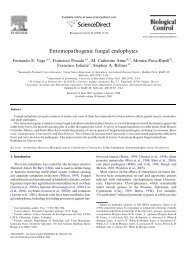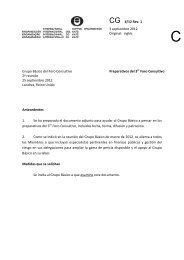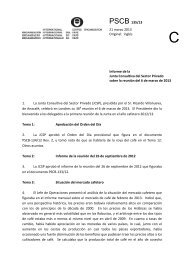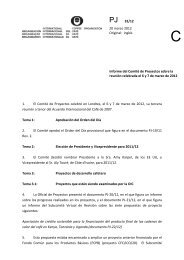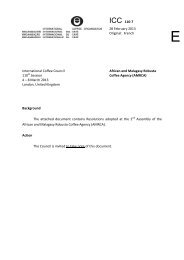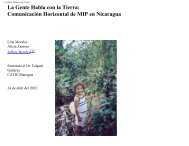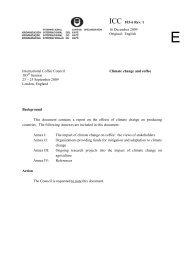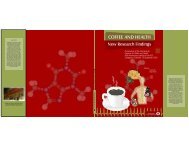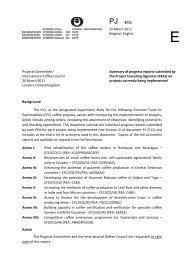Devouring profit - International Coffee Organization
Devouring profit - International Coffee Organization
Devouring profit - International Coffee Organization
Create successful ePaper yourself
Turn your PDF publications into a flip-book with our unique Google optimized e-Paper software.
Table 15. Harvesting periods of some inter-crops in India.<br />
shows the harvesting periods for the inter-crops in three coffee zones of India. It is<br />
clear that all of them have non-coffee labour needs that compete with those operations<br />
required for coffee. Despite cheap labour in India, if coffee prices continue low,<br />
some critical decisions for optimal deployment of labour may be necessary. For instance<br />
if certain CBB operations need to be carried out at the same time that orange<br />
or pepper have to be collected, a problem of labour allocation could arise. This is a<br />
good example of the importance of a comprehensive analysis of the whole farm budget<br />
to assess the likely impact of new control recommendations.<br />
3.2.2 IPM in Ecuador<br />
Regions Crops Harvesting months<br />
Kogadu Orange September / October<br />
Pepper December / January / February<br />
Wayanad Pepper December / January / February<br />
Ginger 9 September / October<br />
Pulneys Pepper December / January / February<br />
The Consejo Cafetalero Nacional, Cofenac 10 (1999) has made recommendations to<br />
reduce the infestation levels of CBB. These recommendations include:<br />
Pick up and burn the berries attacked by CBB, especially from minor flowerings.<br />
Carry out shade regulation in order to increase illumination, which is less favourable<br />
to the pest.<br />
Prune the coffee trees to promote healthy and vigorous plantations.<br />
Carry out sufficient weeding to avoid competition for sunlight, water and nutrients.<br />
Apply fertiliser to ensure good crop productivity.<br />
Anecafé (1999), an exporter organisation working in CBB control, principally promotes<br />
the use of cultural control. This control measure is based on coffee harvesting of all<br />
ripe beans, collection of the fallen berries and pruning the coffee tree. The use of<br />
organic insecticides and biological control is also increasingly promoted.<br />
Thus the main IPM message given to farmers concerns the employment of cultural<br />
control. We believe this to be the correct approach but since farmers are not paid<br />
more for CBB-free coffee, the usefulness of carrying out this measure depends en-<br />
9 Used just during establishment, 2-3 years<br />
10 National <strong>Coffee</strong> Council of Ecuador<br />
35




